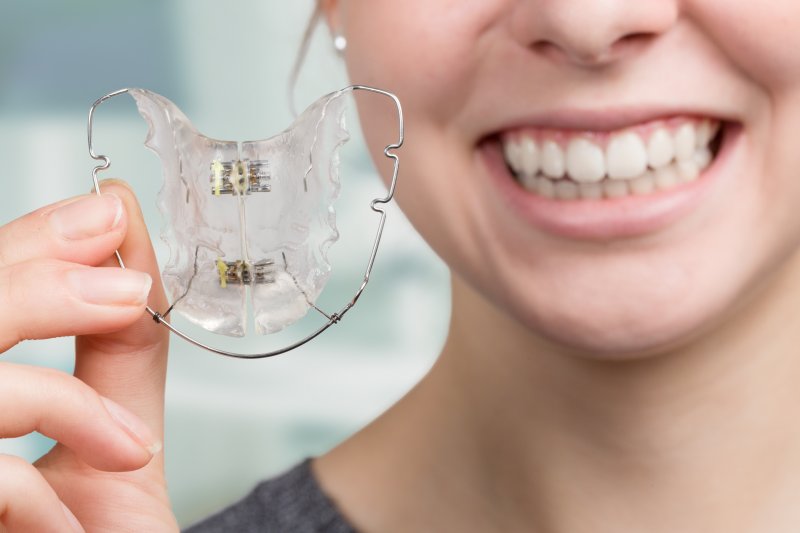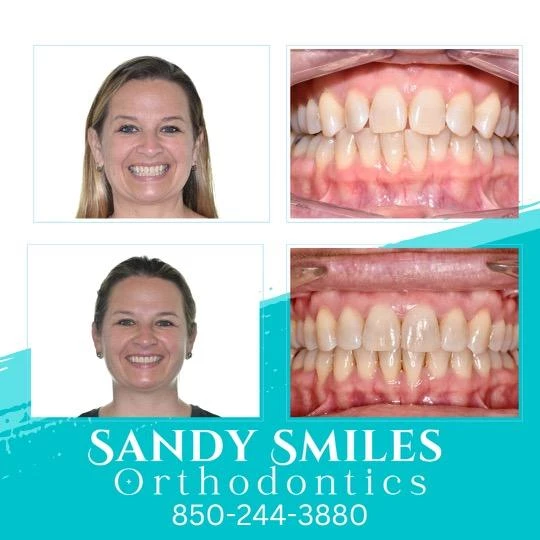The Price of Invisalign: Recognizing the Investment in Your Smile
Invisalign vs. Typical Braces: Which Choice Is Right for You?
When thinking about orthodontic treatment, the option between Invisalign and standard braces presents several important elements that merit cautious examination. Invisalign provides a very discreet option with detachable aligners, while traditional braces provide a more visible yet efficient option for severe imbalance. Each choice incorporates distinctive advantages and downsides associated to aesthetics, comfort, therapy duration, and price. Recognizing these subtleties is critical for making a notified choice that straightens with your personal choices and way of life. The question stays: which choice will best satisfy your orthodontic needs and assumptions?
Summary of Treatment Options

In contrast, traditional braces consist of steel braces and wires that are bonded to the teeth. This technique uses constant stress over time to accomplish placement. While efficient for complex orthodontic problems, conventional dental braces call for routine visits for adjustments and can pose difficulties in maintaining oral health due to the trouble of cleaning about wires and brackets.
Both alternatives have their qualities, and the selection usually rests on particular dental conditions, way of living preferences, and client compliance. Eventually, speaking with an orthodontic professional is important for identifying the most ideal therapy plan customized to individual needs. Comprehending the subtleties of each option can substantially influence the total success of orthodontic treatment.
Visual Considerations
A significant aspect affecting the option between Invisalign and traditional braces is the visual appeal each treatment provides. Invisalign aligners are crafted from clear plastic, making them basically undetectable when worn. This very discreet look is particularly attracting adults and young adults who might really feel awkward concerning their orthodontic therapy. The capacity to maintain a natural smile throughout the positioning process can dramatically improve the patient's self-confidence in professional and social settings.
On the other hand, traditional dental braces are composed of metal brackets and cords, which can be more obvious. While advancements in orthodontic technology have caused the development of smaller sized braces and tinted elastics, conventional braces still keep an even more noticeable profile. For some individuals, the presence of braces may hinder them from looking for essential treatment.
Eventually, the choice in between Invisalign and standard braces might rest on personal preferences concerning appearances. Clients who focus on discernment commonly favor Invisalign, while those who are less worried concerning exposure may go with conventional braces. Recognizing the aesthetic implications of each option is important for making a notified decision that aligns with one's way of life and preferences.
Comfort and Convenience

In regards to comfort, Invisalign aligners are removable, enabling patients to enjoy their favored foods without constraint and keep ideal dental hygiene. Brushing and flossing are streamlined, as the aligners can be obtained throughout these routines, whereas conventional braces need careful navigating around brackets and wires.
In contrast, typical dental braces demand routine changes, making them much less convenient for those with busy schedules. Generally, the comfort and benefit of Invisalign make it an enticing option for several people seeking orthodontic treatment.
Treatment Period and Efficiency
While both Invisalign and typical dental braces work in remedying dental imbalances, the period of therapy can differ significantly in between the 2 options. Generally, Invisalign treatment can take anywhere from 12 to 18 months, depending on the complexity of the case. The clear aligners function by gradually shifting teeth right into their preferred settings, and routine follow-ups with an orthodontist aid make sure progress remains on course.
On the other hand, conventional braces commonly need a longer commitment, typically varying from 18 months to 3 years. This is due to their fixed nature and the usage of wires and brackets, which can be a lot more efficient for serious imbalances and intricate instances (Invisalign). The therapy efficiency of standard braces is well-documented, as they enable specific adjustments and better control over site tooth activity
Eventually, the choice in between Invisalign and standard braces might rest on both the awaited treatment period and the specific dental problems available. Consulting with an orthodontist is crucial, as they can supply customized referrals based on specific needs, guaranteeing the chosen technique straightens with desired timeframes and outcomes.
Expense Contrast and Insurance Policy Alternatives
Expense plays a significant role in the decision-making procedure for people considering orthodontic treatment, whether going with Invisalign or traditional braces. Usually, the cost of Invisalign varieties from $3,000 to article $8,000, while standard dental braces typically cost in between $2,000 and $6,000. Aspects affecting these costs consist of the intricacy of the case, the period of treatment, and geographical area.
Many dental insurance strategies supply partial coverage for orthodontic therapies, but the specifics can vary commonly. Generally, traditional dental braces may be more regularly covered by insurance plans compared to Invisalign, which some insurance firms classify as an aesthetic procedure.
Furthermore, numerous orthodontic practices supply flexible layaway plan, making both therapy alternatives much more accessible. Individuals need to make inquiries about prospective financing choices and discounts for in advance repayments. Evaluating the overall price, including insurance benefits and layaway plan, is essential for making a notified choice that straightens with both aesthetic preferences and budget considerations.

Verdict
In recap, the option between Invisalign and conventional braces rests on numerous factors, consisting of aesthetic preferences, comfort, therapy period, and cost. Invisalign offers a discreet, removable alternative that promotes dental health and dietary adaptability, while conventional dental braces may be preferable for complex oral issues and frequently come with a reduced price factor. Ultimately, appointment with an orthodontist is necessary to evaluate specific situations and figure out the most ideal next page treatment alternative for accomplishing optimum dental placement.
When taking into consideration orthodontic therapy, the choice in between Invisalign and traditional braces offers several crucial aspects that merit cautious analysis.Comparing Invisalign and typical dental braces exposes distinct treatment alternatives for orthodontic correction.While both Invisalign and traditional dental braces are reliable in remedying oral misalignments, the period of therapy can differ dramatically between the 2 choices.Cost plays a considerable duty in the decision-making procedure for people taking into consideration orthodontic treatment, whether deciding for Invisalign or conventional dental braces.In recap, the selection in between Invisalign and traditional braces pivots on several elements, consisting of aesthetic choices, comfort, therapy period, and price.